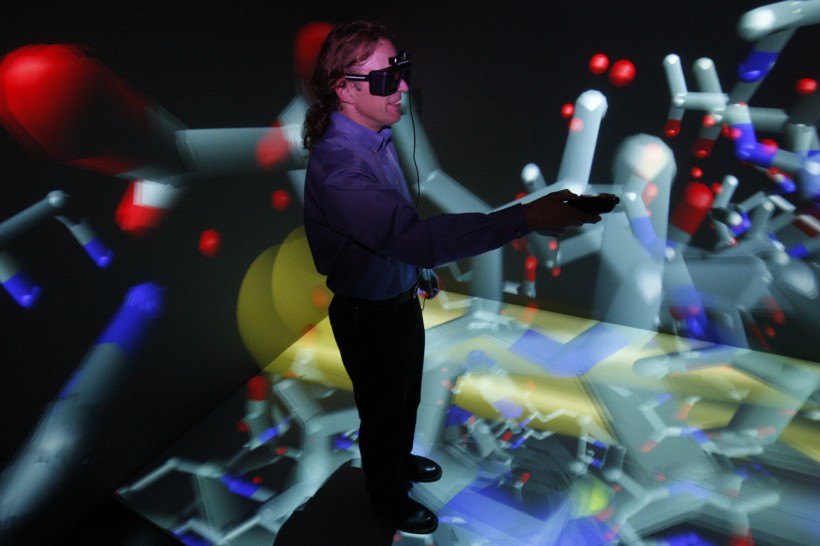Phil Romkey can stand in the sun-lit top floor of Halifax’s new library without leaving his workplace at St. Mary’s University.
Well, he can virtually stand in the new library in the Data Cave he oversees at the ACEnet headquarters at the Halifax university.
Positioned in the darkened Data Cave, wearing sophisticated 3-D glasses, Romkey can tour all of the new building, get a keen perception of how it interacts with surrounding buildings and assess pedestrian traffic inside and outside the compelling new edifice.
The Data Cave is a three-dimensional immersive environment designed for visualizing complex simulations. It is essentially a series of 3-D projectors that throw images on to three walls and the floor, so viewers have the impression they are standing within a structure, whether it’s a new library, a space station or a molecule. The viewer can tour through the field or structure, and the image can change depending on where the viewer is standing in the room, which holds up to four people.
“This is now used mainly for science and research,” said Romkey, the Lead Systems Administrator at ACEnet, the group that oversees the Data Cave. “It’s easier for young people to visualize a molecule when they’re standing inside it.”
ACEnet and others want the potential of the Data Cave to spread beyond the single city block that is St. Mary’s University and are collaborating with NSCAD University and other groups on using its immersive powers to aid with design, education and research.
NSCAD has installed a similar 3-D immersive platform in its Harbour Campus a mile away, so ACEnet is able to simultaneously create virtual environments on two campuses. Though the NSCAD facility is less complex than that of SMU, it is a larger space, allowing the participation of up to 20 people.
Gregor Ash, Director at the Institute of Applied Creativity at NSCAD, can even see a day when participants could do a roadshow with the facility using 3-D projectors or other technology.
The educational benefits of such collaboration are obvious, but Romkey and Ash stressed that there are opportunities for startups to work with the universities on perfecting their designs and prototypes using the Data Cave technology.
They are already in discussions with a few startups. The Data Cave allows developers of a physical product an intricate examination of the prototype because they can walk around inside it and inspect it.
“We absolutely see the commercialization potential,” said Ash. “To be able to experience your content in full life-size scale, to be able to manipulate and move through and around data and objects, it helps immeasurably.”
This sort of immersive technology can assist with the development of products, and also help key partners – whether they are potential investors, customers or collaborators – to understand the intricacies of the project.
Said Ash: “It’s all about creating an ecosystem for experimentation and prototyping by having the tools available that we didn’t have before.”
This article first appeared in the autumn Entrevestor Intelligence report.
Disclaimer: Entrevestor receives financial support from government agencies that support startup companies in Atlantic Canada. The St. Mary’s University Masters of Technology, Entrepeneurship and Innovation program is a sponsor of Entrevestor. The sponsoring agencies play no role in determining which companies and individuals are featured in this column, nor do they review columns before they are published.










